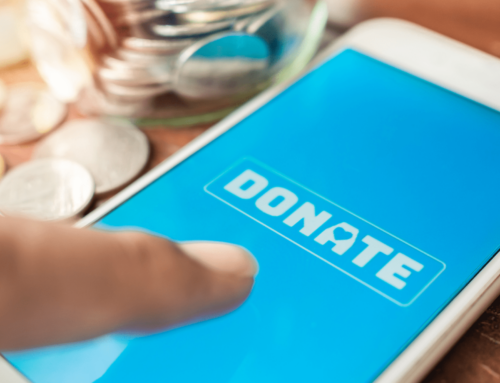Working with generous members of the community to raise funds can be key to furthering your nonprofit work, but to take the first step you’ll need an effective grant proposal.
A grant proposal is a formal request for financial support from a foundation, corporation, or individual. Drafting such a thing can seem like a daunting task, but as long as your nonprofit has a clear mission and attainable goals, it should be fairly simple. With this guide to writing a compelling grant proposal, you’ll be ready to apply for grants in no time.
Before pledging to help your cause, the party you’re reaching out to will want to know exactly where their money is going and how it will affect the world for the better. That means that every piece of a grant proposal is built to show future supporters who you are and what you aim to do with their funds.
Before You Begin
Before you sit down to compose your proposal, you’ll need to gather your materials. Be sure to have your project budget, your mission statement, and a list of your executives on hand, as well as any other data that validates your work.
Information about the organization you’re contacting is also vital. Each corporation, foundation, and individual you reach out to may have different preferences about the content you send them. Familiarize yourself with your chosen party before you begin, and make sure to follow their specific grant proposal guidelines.
As you begin, keep in mind that you are crafting a type of persuasive statement. Remember—or study—Aristotle’s three Modes of Persuasion: people should be able to trust your character (Ethos), have compassion for your cause (Pathos), and see the proof that your work is effective (Logos). Each of the following 10 elements of your proposal should work together to provide a convincing invitation for any future supporter.
1. Cover Letter
Though your nonprofit’s cover letter should be the first thing your recipient sees, it is best to write it last. Saving it for the end will allow you to simplify the information you’ve already compiled and connect personally with your future donor.
The goal of a cover letter is to connect your nonprofit’s cause with the donor’s passions. It should always be addressed to an individual and should show an understanding of their purpose and desire. Lay out (in the shortest form possible) the basic goals and needs of your initiative, and why the other party should be interested. Try to keep your cover letter only a few paragraphs long, and never more than one full page of writing. You’ll have plenty of chances to elaborate later, but for now your desire should be to simply invite them further into your mission. Keep your language friendly and respectful, with a “Dear” at the beginning and “Sincerely” at the end.
2. Executive Summary
The executive summary of your proposal must be straightforward and brief, but should give ample details about your goals and strategies. In this summary you’ll need to convince your donor that:
- there is a problem,
- your organization has the means and experience to solve it, and
- this mission is relevant to theirs.
Cite data and statistics, revealing what your focus is and how you will be able to enact change. Keep your donor’s ideals in mind and connect them to the goals of your initiative. Don’t be afraid to brag on your nonprofit a bit, letting them know that you can and will fulfill the mission effectively—that your organization is the right one to support.
As with the cover letter, you may want to write your summary after the body of your proposal, but be sure to include it early in your submission. The executive summary has the potential to keep your donor reading or turn them away for good, so take special care to make it compelling. Remember Aristotle’s modes of persuasion: give them the logical proof of your efficacy, show them that your organization can be trusted with the task, and remind them that their own passions align with yours.
3. Statement of Need
Your proposal’s statement of need portion is simple: you must convince your prospective donor that there is a problem, and that the problem is solvable.
This is where you want to employ the Logos: include the numbers and facts to tell the story of a community in need. Remember why you started this initiative in the first place, and focus on that. What needs to be changed? Is it possible to change it? Both these questions are key: not only should the need be evident, but its solution should also appear attainable. You will go further into strategic details later, but even here the situation should not seem hopeless. Without a glimpse of an achievable goal, your donor will be disinclined to throw money at the problem. If you do make it clear that improvement is possible, they should be motivated to keep reading.
4. Outline of Goals
This section is about how your organization wants the “need” numbers to change. Be specific, and try to create SMART goals: Specific, Measurable, Achievable, Relevant, and Time-Bound. These types of goals will both help you carry out your initiatives and show your future donors that you mean it when you seek community improvement.
Specificity and measurability may not seem important, especially if you’re focused on any and all improvement. But for your future donor (and for your nonprofit), being able to gauge change is essential. They want to know exactly what sort of difference their contribution will create; that’s what your goals outline is all about.
5. Action Plan
You’ve shown your future patron the problem. You’ve told them what you want to do about it. Now you need to present your implementation strategies: the How of it. The strength of your plan of action is what will convince a donor that your nonprofit can put their money to good use. Be specific and realistic. Talk about your staff capabilities, your experience in the field, and the tools at your disposal. If you have been working for some time already, and have data to prove your methods, provide it. Give them every proof that you have the ability to achieve the goals you’ve set. Use positive language: don’t be afraid to hype up your previous work, and show your excitement about the future. Remind them that all you need to succeed is their pledge of support.
6. Evaluation Method
Even before you receive your grant, you need a plan to evaluate the results of your work. This will be a detailed account of how you plan to measure the improvements you laid out in the goals section. If you’re not sure where to go with this, take a look at the work of other nonprofits. You’ll almost always find an abundance of data about the change they’ve enacted. This can be heartwarming in the form of success stories and videos, but it should also be presented in numbers and statistics. How exactly will a donor know that their contribution is effective? They want to know that you’ll be able to tell them.
7. Budget Details
Any future donor needs to know exactly how you operate financially. That’s why a detailed project budget is essential to your grant proposal. This should be in graph or table form, and include all income and costs for your initiative, from current donations to salaries to overhead costs. Your budget will show why you need funding and specifically where it will go. Pay close attention to this section, as it is the basis for your grant request.
8. Community References
To build your Ethos with your donor, you’ll want to provide a list of the individuals and organizations who are already working with you. Let them know who else is on board with the project, and where you’re receiving other funding. Knowing that you have a sustainable plan for continued operation is vital, and trustworthy names can go a long way towards building your reputation, especially if you’re reaching out to a donor for the first time.
9. Organizational Information
The final thing you should include in your proposal is some basic information about your organization. Tell about your age and origin, as well as naming your top executives. Explain how and why your nonprofit began in the first place, and tell about the other projects you have completed in the past. This background gives your future donor a better idea of who they’re working with.
10. Appendix
Finally, before you submit your grant proposal, include an appendix with any other documents and materials that may be helpful. Some examples are: proof of your tax-exempt status under Section 501(c)(3), reports and press releases of your past work, and letters of support from other donors. These items will conclude the body of your proposal.
Conclusion
Writing an effective grant proposal can be a challenge, but it should never seem impossible. If you keep the modes of persuasion in mind, state your case clearly, and go over your work thoroughly, you can feel confident when you submit your proposal. Even if you are rejected the first time, remember that dismissal from one donor does not mean failure: keep reaching out to the members of your community for support and pressing towards your goals. There are people everywhere who are eager to fund the right causes, and a solid grant proposal can lead them to you.
To put your new grant proposal skills to work, start applying to some of the grants on our Giant List of Corporate Grants and Donations.





